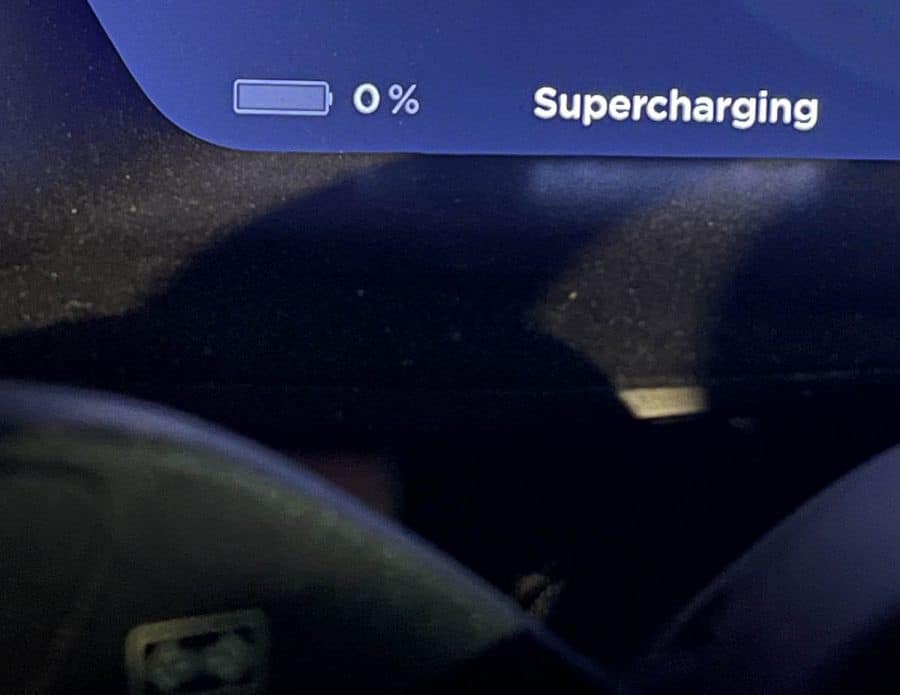A frequent question perspective buyers (and owners) likely have around electric vehicle ownership is what happens if your vehicle runs out of charge.
Clearly it’s best not to allow your Tesla to run out of charge, but in the real world it can happen. Essentially, you’ll need to have the vehicle towed to somewhere it can be charged, preferably a Tesla Supercharger for fastest charging possible or to your intended destination (assuming you don’t need it charged faster at that location). Perhaps in the future we’ll have more vehicle to vehicle charging options. There are some mobile charging companies popping up, but they’re not as widespread with service and charging times can be much slower.
For the first time in 6 years of electric vehicle ownership, I got down to a displayed 0% charge on a vehicle – our Tesla Model X. Read along as I detail how I misjudged the amount of energy I would need for a towing trip I made a handful of times previous.
Big Factors that Affect Your Range
This was a trip in which I was dealing with three of the biggest energy draining variables associated with electric vehicles:
- Towing a trailer
- Uphill driving through a mountain pass
- Colder temperatures in the low to mid 30’s (Fahrenheit)
My destination was to a cabin we recently purchased in north Central Washington and was another trip I was hauling our 6×12 enclosed cargo trailer. In fact, this was a trip I had just made a week or two prior without issue.
The Trip
I stopped off at Monroe, WA and Supercharged to 81% before I took off. The Tesla estimated I would reach my destination with 47% charge. I knew this wasn’t the case since I was towing a trailer and going through the mountains. It was also colder temperatures. While the vehicle does adjust expected range when towing, I’ve come to expect a fluctuation up to 30% on previous trips to to our cabin with the enclosed cargo trailer. With an expected 47% at destination, I thought for sure I’d get to the cabin with at least 17% charge or more.
When I First Had Concern
Traveling east of Stevens Pass is mostly a downhill descent. I noticed my estimated range at arrival started to drop substantially. I kept an eye on things and the expected percentage upon arrival continued to drop.
Range Anxiety Kicks In
As I’m probably less than a mile from my turn, I notice the expected range now shows I’ll reach our cabin with only 2%. At this point I’m starting to worry and punch in the next nearest Supercharger which is in Leavenworth, WA. It shows I’ll reach the Supercharger with 4%, so I figured that will give me a better buffer than trying to reach the cabin. The Supercharger was approximately 15 miles away at this point. I decide to keep the Supercharger as my new destination and slowly watch the estimated range drop to 3%, a few miles later 2%.
Panic Mode Sets – Warning Message I Can’t Reach my Destination
As mentioned above, I have now seen the estimated percentage drop from 4% to 2% and I’m officially going into a panic mode. I’m now considering whether or not I should detach the trailer along the highway somewhere to Supercharge and come back for it. I decide to keep going, and see the estimated range now drop down to 1%. I’m now a few miles from downtown Leavenworth and my battery has now hit 1% and it is estimating I will get to the Supercharger with 0%.
As I continue traveling, I’m nearing the downtown area, but I’m getting a warning I need to charge before I can reach my destination. I keep pushing onward as there aren’t many areas to pull over to see what happens. As I hit downtown, I’m still 1.5 miles from the supercharger and there’s imminent worry I won’t make it to the charger. Trying to find a 110v plug isn’t an option I wanted to consider, so I continued on.
Reaching the Supercharger with 0%
Luckily, I make it into the Dan’s Food Market parking lot where the Tesla Supercharger is located. No one else is charging, so I make a wide u-turn to pull in sideways to avoid having to disconnect the trailer, still wondering if the vehicle is going to simply power off. With relatively short cables at Superchargers, pulling in sideways doesn’t always give enough reach. I literally don’t know if I’ll need to pull up a few inches further (and whether or not I’ll have charge to be able to do so). The charging cable does reach, and I begin charging and can finally take a sigh of relief.
Conclusion
This is certainly not a situation I want to experience again. Ironically, I already planned on this being the last trip we made to the cabin towing a trailer until the Spring a week prior. This certainly affirmed it though. Despite seeing gradual drops in range as the weather began getting colder, this was by far the most energy used on the same trip with the same trailer. It may have even been the lightest load I was carrying this time.
I’ve seen videos where other owners have shown a bit of additional range despite showing 0% which is the only reason I continued driving. See the warning message later appear that I needed to stop to charge in order to reach my destination was certainly worrisome. Word of advice, even though it takes longer to charge once you hit 80% (or even 70%), sometimes those extra minutes to get additional charge may be worth it. Especially in colder environments, uphill driving, and certainly when towing a trailer.
If I didn’t make it to the Supercharger (those last several miles were nerve racking), it would have been time for a call to Tesla Roadside assistance or possibly other towing services.

